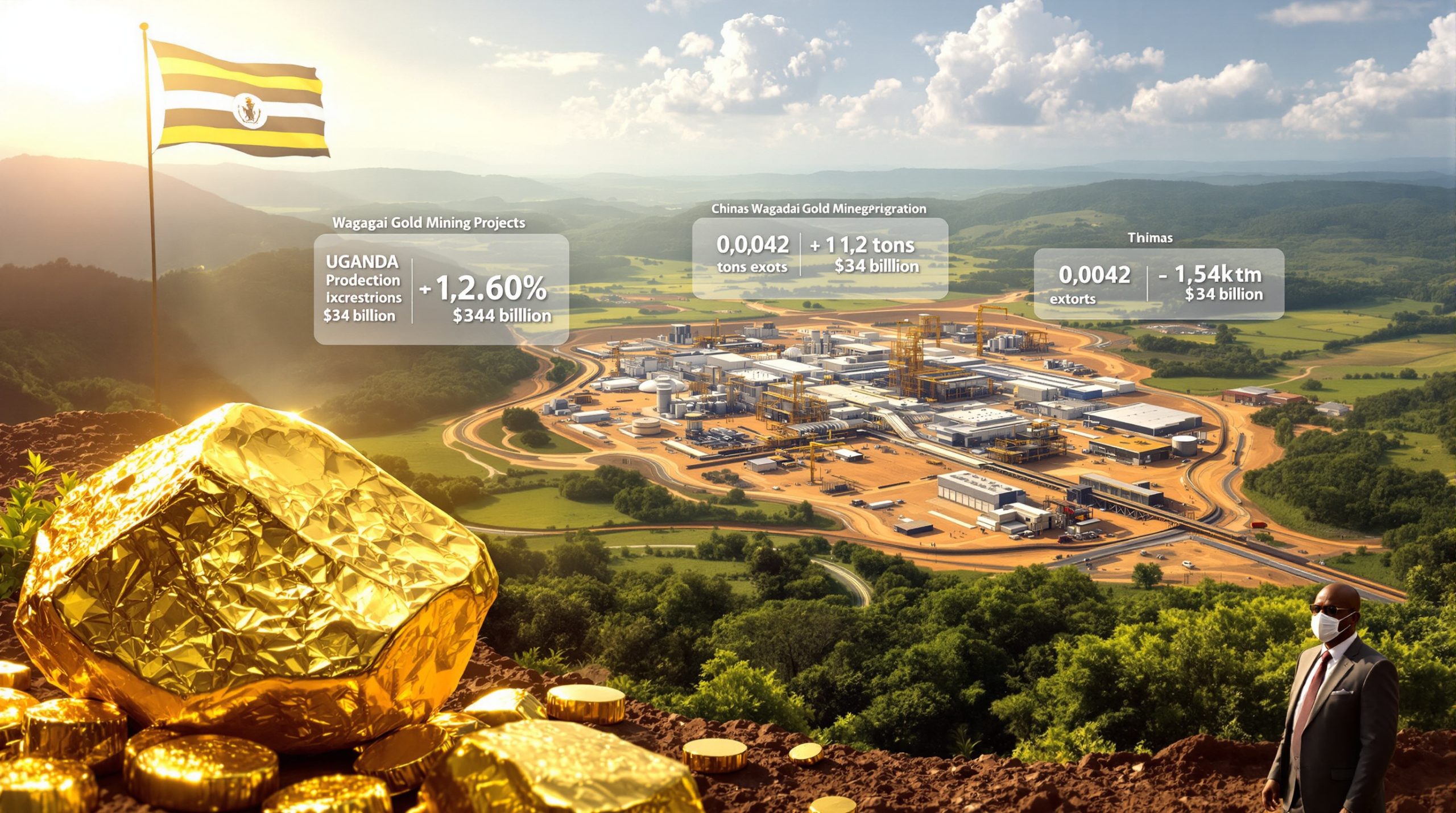What is the Elevra Lithium Merger?
In a significant reshaping of the North American lithium landscape, Australia-based Sayona Mining is acquiring US-based Piedmont Lithium in an all-stock transaction valued at approximately $1.2 billion. The newly formed entity, named "Elevra Lithium," represents one of the most strategic consolidations in the lithium sector amid challenging lithium market dynamics characterized by price volatility and supply chain uncertainties.
The merger agreement establishes a balanced governance structure, with the board comprising equal representation—four nominees from each company—ensuring collaborative decision-making during the critical integration phase. With regulatory approvals pending from both Australian and American authorities, including the Foreign Investment Review Board and the Committee on Foreign Investment in the United States (CFIUS), the companies anticipate finalizing the transaction by mid-2025.
Key Details of the Sayona-Piedmont Deal
This strategic combination brings together Sayona's extensive Canadian operations, including its 75% stake in North American Lithium (NAL), with Piedmont's complementary asset portfolio, which includes its 25% interest in NAL. The consolidation eliminates overlapping ownership structures, creating operational efficiencies across eight mining claims spanning Québec and Ontario.
The timing of this merger coincides with a significant correction in lithium markets, with prices having declined approximately 73% from their November 2023 peak of $81,000 per ton to around $22,000 per ton in early 2025. This market softening has created favorable conditions for strategic acquisitions, allowing Elevra to consolidate assets at attractive valuations compared to historical highs.
Industry analysts note that the all-stock structure preserves capital during the current downcycle, positioning Elevra with approximately $850 million in combined liquidity to weather continued market volatility while pursuing growth initiatives. The transaction also streamlines permitting and operational workflows, particularly in Québec where regulatory streamlining could accelerate project timelines by up to 18 months.
Strategic Rationale Behind the Merger
The formation of Elevra Lithium addresses several strategic imperatives facing North American lithium producers. Foremost among these is the fragmentation of Canadian lithium operations, which has historically resulted in suboptimal capital allocation and duplicative infrastructure investments. By combining Sayona's Québec-based Authier Lithium Project with Piedmont's development assets, Elevra projects a 15-20% reduction in per-unit extraction costs through shared infrastructure and enhanced operational scale.
The merger also significantly strengthens the combined entity's position within the North American electric vehicle supply chain. With 78% of global lithium refining capacity currently concentrated in China, Elevra's consolidated operations could supply approximately 12% of North America's projected lithium demand by 2030, helping to address critical mineral security concerns.
Particularly noteworthy is how the merger aligns with recent policy initiatives, including the U.S. Inflation Reduction Act, which mandates that 50% of EV battery components be sourced domestically or from free-trade partners by 2027. This regulatory tailwind positions Elevra to capitalize on approximately $6 billion in federal grants designated for battery supply chain resilience, including the Department of Energy's Battery Materials Processing Program.
The merger also leverages Québec's hydropower infrastructure, providing Elevra with a substantial 40% cost advantage in energy-intensive lithium processing compared to competitors reliant on natural gas—a differentiator that translates to approximately $1,400 per ton in operational savings at current energy prices.
How Will This Merger Impact the North American Lithium Market?
The formation of Elevra Lithium represents more than a corporate consolidation—it potentially reshapes the North American critical minerals landscape at a pivotal moment in the energy transition. As global competition for battery materials intensifies, this merger establishes a more robust regional supplier with enhanced production capabilities and increased vertical integration potential.
North American EV Supply Chain Integration
With projected annual production capacity of 160,000 metric tons of spodumene concentrate, Elevra could meaningfully reduce North America's lithium import dependency. Currently, the region imports over 80% of its processed lithium requirements, with the merger potentially reducing this reliance on Chinese imports by approximately 18% by 2027.
The company's announced plans to invest $500 million in a lithium hydroxide conversion facility in Tennessee creates strategic geographic alignment with major battery manufacturing investments, including Ford's BlueOval City and General Motors' Ultium Cells plants. This colocation strategy has proven effective for competitors like Albemarle, whose Silver Peak facility achieved 30% downstream cost reductions through integrated operations.
Dr. Maria Gonzalez, Senior Analyst at Battery Materials Research Institute, notes: "The vertical integration strategy pursued by Elevra mirrors successful models we've seen in Asian markets, where proximity between mining and refining operations creates resilience against supply chain disruptions and logistics constraints."
Elevra's formation also strengthens Canada's position within the North American Critical Minerals Alliance, which has established ambitious targets to secure 50% of global lithium production by 2030. The strategic advantage of Québec's hydroelectric infrastructure cannot be overstated, as it provides a substantial edge in ESG performance metrics that increasingly influence procurement decisions among EV manufacturers committed to reducing embedded carbon emissions in their supply chains.
Canadian Operations Consolidation Benefits
The merger unlocks significant operational synergies across Elevra's Canadian asset base. Combined operations at NAL and Authier are projected to increase resource yields by approximately 22% through shared geostatistical modeling and cross-site technical expertise exchange. This integration allows for optimization of mine sequencing to prioritize extraction from higher-grade lithium pegmatite zones, enhancing near-term cash flow generation.
A particularly valuable technical asset in this consolidation is Sayona's proprietary Dense Media Separation (DMS) technology, which has demonstrated spodumene recovery rates of 78% compared to conventional methods yielding approximately 65%. Deploying this technology across all Elevra operations represents a substantial efficiency gain in mineral processing.
The consolidation also eliminates redundant exploration expenditures, estimated at $120 million annually, allowing reallocation toward downstream investments in lithium iron phosphate (LFP) cathode production. This vertical integration strategy responds to growing demand for LFP chemistry, which is projected to capture 60% of the EV battery market by 2026 due to its superior safety profile and lower reliance on constrained materials like cobalt.
From a talent perspective, the merger combines Sayona's expertise in hard-rock lithium extraction with Piedmont's experience in refining technology and market development, creating a more comprehensive technical capability that can accelerate innovation across the value chain.
Why is This Merger Happening During a Lithium Price Downturn?
The timing of the Elevra Lithium formation, amid one of the most challenging lithium market environments in recent years, represents a countercyclical strategy that merits closer examination. While conventional wisdom might suggest postponing major corporate actions during price depressions, this merger reflects several compelling strategic considerations.
Current Lithium Market Conditions
The lithium market currently faces a substantial supply-demand imbalance, with a projected surplus of approximately 450,000 tons in 2025. This oversupply condition stems from the accelerated development of new production capacity in Australia, Africa, and South America in response to the 2021-2022 price spike, when lithium carbonate briefly traded above $80,000 per ton.
Simultaneously, electric vehicle adoption has experienced a moderation in growth rates, with sales increasing approximately 15% year-over-year in early 2025, down significantly from the 65% growth observed in 2023. This deceleration reflects several factors, including persistent affordability challenges for mainstream consumers, charging infrastructure limitations, and growing anticipation of next-generation solid-state battery technologies expected to commercialize after 2027.
Benchmark Mineral Intelligence forecasts lithium market trends remaining below $25,000 per ton until at least 2026, approximately 70% below peak levels, as new production capacity continues to outpace demand growth. This pricing environment has placed severe pressure on producer margins, particularly for higher-cost operations and earlier-stage development projects with substantial capital requirements.
The sector has already witnessed several project delays and suspensions, with an estimated $4.2 billion in lithium investments placed on hold during 2024 alone. This challenging backdrop has necessitated industry consolidation to preserve operational viability and maintain development momentum for strategically important projects.
Strategic Timing Considerations
The mid-2025 completion timeline for the Elevra merger coincides strategically with the implementation phase of the U.S. Critical Minerals Security Act, which offers substantial 30% investment tax credits for integrated lithium projects. This alignment potentially enhances the economic returns on Elevra's planned downstream investments in processing and refining capacity.
From a valuation perspective, Piedmont's pre-merger enterprise value of $3.2 billion represents a 40% discount to its 2023 peak, creating a compelling acquisition opportunity for Sayona shareholders. This discount reflects not just current market conditions but also the recognition that scale and integration will be increasingly critical success factors in a maturing lithium industry.
The combined balance sheet strength of Elevra, with approximately $850 million in liquidity, provides substantial firepower to acquire distressed junior mining assets at favorable valuations during the continued downturn. Industry observers have noted potential acquisition targets trading at 0.3-0.5x book value, representing historically low multiples for resource-rich companies with viable development pathways.
This consolidation also represents a defensive positioning against competitive pressures from major diversified miners who have signaled increasing interest in lithium assets. BHP's recent lithium acquisitions and Rio Tinto's advancing Jadar project in Serbia suggest growing competition from large-cap miners with substantial balance sheet advantages.
"The lithium sector is following a classic maturation pattern we've observed in other commodity markets," explains mining economist Dr. Jonathan Weber. "The boom-bust cycle typically leads to consolidation among mid-tier producers seeking scale advantages, followed by the entry of major diversified players. Elevra's formation represents a proactive response to this evolutionary pressure."
What Are the Potential Outcomes for Elevra Lithium?
The formation of Elevra Lithium through the Sayona-Piedmont merger creates a significantly transformed entity with both enhanced opportunities and elevated challenges. Analyzing the potential outcomes requires consideration of market positioning, competitive dynamics, and execution risks in a rapidly evolving industry.
Market Position and Competitive Advantages
Elevra's projected 12% share of North American lithium production would position it as the third-largest regional producer, behind only Albemarle (32%) and Livent (18%). This scale provides enhanced negotiating leverage with downstream customers and improved access to capital markets, critical for funding future expansion initiatives.
The company's Québec-based operations benefit substantially from Canada's favorable mining fiscal regime, including the 15% mineral exploration tax credit, which reduces effective tax rates to approximately 18% compared to 21% for U.S.-based competitors. This tax advantage translates to approximately $12 million in annual savings based on projected production volumes.
A significant competitive differentiator lies in Elevra's strategic partnerships with battery manufacturers, including established offtake agreements with Panasonic and LG Energy Solution covering approximately 70% of projected production between 2026-2030. These agreements provide revenue visibility during the current market downturn while establishing Elevra as a preferred supplier to tier-one battery producers.
The merger also creates opportunities for knowledge transfer between Sayona's expertise in hard-rock lithium mining and Piedmont's capabilities in chemical processing and refining. This complementary technical foundation positions Elevra to potentially accelerate development of direct lithium extraction technologies applicable to the extensive lithium brine resources identified in the Paradox Basin, where preliminary exploration has indicated lithium concentrations averaging 120-180 ppm.
Challenges and Risk Factors
Despite its strategic rationale, the merger faces significant integration challenges that could potentially delay realization of projected synergies. Reconciling Sayona's Agile mining workflows with Piedmont's Six Sigma operational protocols represents a particular organizational challenge that industry analysts estimate could delay productivity gains by 6-8 months during the post-merger integration period.
The combined entity also inherits unresolved regulatory and stakeholder issues, including Piedmont's ongoing litigation with the Eastern Band of Cherokee Indians regarding water rights at the Carolina Lithium site. Resolution of these concerns could potentially incur approximately $200 million in mitigation costs and impact development timelines for this strategic U.S. asset.
Market timing also presents execution risks, as continued lithium price volatility could necessitate capital expenditure adjustments or phasing changes to previously announced projects. The company's planned $500 million Tennessee hydroxide facility may require flexible implementation staging to align with evolving market conditions.
Competitive pressures also continue to intensify, with Chinese producers like Ganfeng and Tianqi pursuing aggressive international expansion strategies despite the price downturn. These companies benefit from state-backed financing and established processing expertise that could challenge Elevra's cost position in certain segments of the value chain.
Environmental permitting represents another significant challenge, particularly as lithium extraction faces increasing scrutiny from stakeholders concerned about water usage and habitat impacts. Elevra's integrated ESG strategy, which includes commitments to renewable energy utilization and water recycling technologies, will be crucial in navigating this complex regulatory landscape.
Lithium Market Outlook 2025-2026
The formation of Elevra Lithium occurs against a backdrop of significant structural changes in global battery materials markets. Understanding the medium-term outlook for lithium supply-demand dynamics and industry consolidation trends provides essential context for evaluating the merger's strategic positioning.
Supply-Demand Dynamics
Global lithium demand is projected to grow at a compound annual growth rate (CAGR) of 19% through 2026, reaching approximately 1.8 million metric tons of lithium carbonate equivalent (LCE). This growth trajectory is supported by accelerating EV penetration in European and North American markets, alongside continued expansion of energy storage applications.
Supply growth, however, continues to outpace demand expansion in the near term, with production increasing at an estimated 24% CAGR to reach 2.3 million tons by 2026. This imbalance reflects the substantial investment committed during the 2021-2022 price spike, when project development accelerated across multiple jurisdictions.
Elevra's position as a cost leader, with projected all-in sustaining costs (AISC) of approximately $7,800 per ton compared to the industry average of $9,200, provides important margin protection during this period of persistent global lithium oversupply. The company's focus on LFP cathode materials—forecast to capture 60% of the EV battery market by 2026—represents a strategic hedge against volatility in nickel and cobalt markets that affect competing battery chemistries.
A significant factor influencing near-term market dynamics is the accelerating adoption of material recycling within the battery value chain. Commercial-scale operations commissioned by Redwood Materials and Li-Cycle have demonstrated recovery rates exceeding 95% for lithium, creating a secondary supply source that could contribute approximately 40,000 tons of LCE by 2026.
Strategic Industry Consolidation Trends
The Elevra merger represents an early manifestation of what industry observers anticipate will be a wave of consolidation across the lithium sector. Analysts at Goldman Sachs have identified approximately $15 billion in potential M&A activity among mid-tier producers during 2025-2026, as companies seek operational synergies and balance sheet strength to weather continued market volatility.
This consolidation trend extends beyond corporate mergers to include strategic partnerships and joint ventures focused on technology development. Elevra's acquisition of a 15% stake in Natron Energy positions it within the emerging sodium-ion battery ecosystem, which presents both diversification from lithium dependency and complementary applications for stationary storage. This aligns with BMW's recent commitment to sodium-ion technology for urban EV models, potentially opening a $4 billion ancillary market by 2030.
The North American lithium landscape continues to evolve in response to policy incentives, with the Inflation Reduction Act's domestic content provisions accelerating investment in processing and refining capacity. Industry forecasts suggest North American lithium processing capacity could increase from 100,000 tons currently to over 500,000 tons by 2027, significantly reducing reliance on Chinese refiners.
In this evolving landscape, Elevra's consolidated Canadian operations and planned U.S. refining investments position it to benefit from both operational synergies and strategic alignment with regional policy objectives. The company's diversified approach—spanning mining, processing, and emerging battery technologies—provides multiple pathways to value creation during a period of significant industry restructuring.
As Dr. Elaine Richardson, Director of the Center for Battery Materials Research, observed: "The lithium industry is entering a maturation phase where operational execution and value chain integration will distinguish successful producers from marginal players. Scale matters, but so does technological innovation and strategic positioning within evolving battery chemistries."
The Sayona-Piedmont merger forms Elevra Lithium through a significant restructuring within the North American battery materials landscape—one that responds to near-term market challenges while positioning for long-term growth opportunities across an increasingly complex energy storage ecosystem. The merger also complements [Australia's lithium ambitions](https://discoveryalert.com.au/news/australia-s-lithium-ambitions-challenges-future-prospects-
Ready to Spot the Next Major Mining Discovery?
Gain the market edge with Discovery Alert's proprietary Discovery IQ model, which analyses ASX announcements in real-time to identify high-potential mineral discoveries before the broader market. Visit our discoveries page to see how major finds have historically generated substantial returns for early investors.




